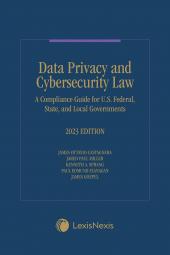Unraveling Legal Injury in Tort: Key Concepts
In the legal realm, tort law governs civil wrongs that result in harm or injury to individuals or their property. Understanding the concept of legal injury in tort involves grasping key concepts and examining landmark cases that have shaped this area of law.
Defining Legal Injury:
Legal injury, in the context of tort law, refers to harm or damage suffered by an individual due to the wrongful actions or negligence of another party. It encompasses physical injuries, emotional distress, property damage, and financial losses. Legal injury forms the basis for seeking compensation or redress through civil litigation.
Elements of Tort Liability:
Tort liability typically involves proving four key elements: duty of care, breach of duty, causation, and damages. Duty of care refers to the legal obligation to act reasonably and prudently to avoid causing harm to others. Breach of duty occurs when this obligation is violated. Causation establishes a direct link between the defendant’s actions or negligence and the plaintiff’s injuries. Damages quantify the losses suffered by the plaintiff as a result of the injury.
Types of Legal Injury in Tort:
Legal injury in tort can take various forms, including:
- Personal Injury: This encompasses physical harm, such as injuries sustained in accidents, assaults, or medical malpractice.
- Emotional Distress: Certain torts, such as intentional infliction of emotional distress or negligence, can cause psychological harm, leading to emotional distress.
- Property Damage: Tortious conduct can result in damage to property, including real estate, vehicles, or personal belongings.
- Economic Loss: Business torts or breaches of contract can lead to financial harm, including lost profits, business opportunities, or investment losses.
Landmark Cases Shaping Tort Law:
Several landmark cases have played a pivotal role in shaping the legal landscape surrounding tort liability and legal injury. These cases have established important precedents and clarified key legal principles.
1. Donoghue v. Stevenson (1932):
In this influential case, the House of Lords established the modern concept of negligence and the duty of care owed by manufacturers to consumers. The ruling established that manufacturers owe a duty of care to consumers to ensure that their products are safe and free from defects.
2. Palsgraf v. Long Island Railroad Co. (1928):
This case, heard by the New York Court of Appeals, clarified the concept of proximate cause in negligence cases. The court held that liability for negligence only extends to harm that is reasonably foreseeable, emphasizing the importance of a direct causal connection between the defendant’s actions and the plaintiff’s injuries.
3. Brown v. Board of Education (1954):
Although primarily known for its landmark ruling on racial segregation in schools, Brown v. Board of Education also had significant implications for tort law. The case highlighted the concept of societal duty and the responsibility of institutions to prevent harm, even if it does not involve a direct relationship between the parties.
4. Liebeck v. McDonald’s Restaurants (1994):
This widely publicized case involved a woman who suffered severe burns from spilled hot coffee purchased from a McDonald’s restaurant. The case raised questions about product liability, contributory negligence, and the duty of businesses to warn customers of potential hazards.
5. Tarasoff v. Regents of the University of California (1976):
In this case, the California Supreme Court ruled that mental health professionals have a duty to warn potential victims of foreseeable harm posed by their patients. The decision expanded the scope of duty in tort law to include the protection of third parties from harm.
Conclusion:
Understanding legal injury in tort requires a grasp of key concepts and an examination of landmark cases that have shaped this area of law. By defining legal injury, exploring its various forms, and studying influential cases, legal practitioners can navigate tort liability effectively and seek justice for those who have been harmed. Read more about legal injury in tort





